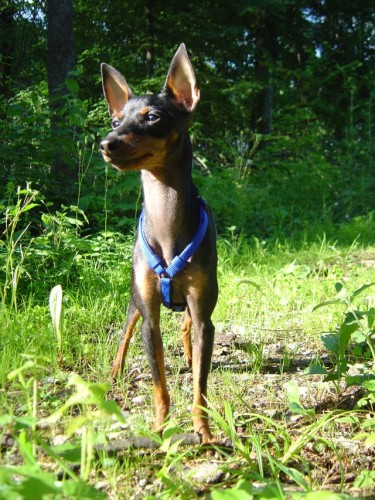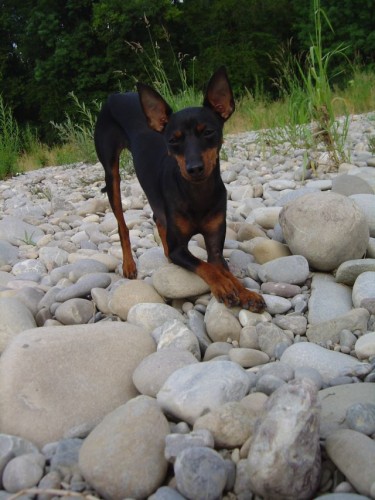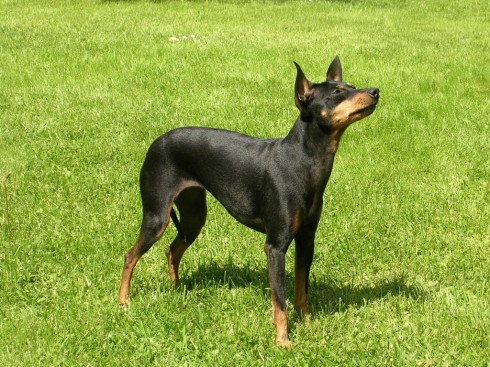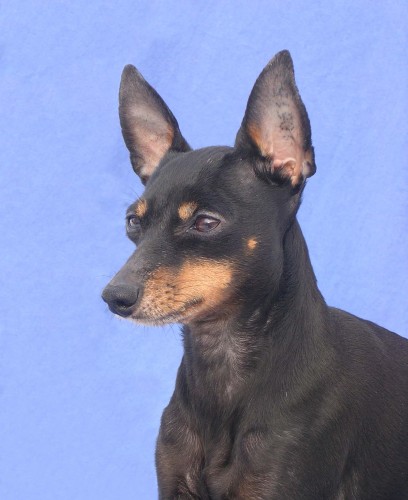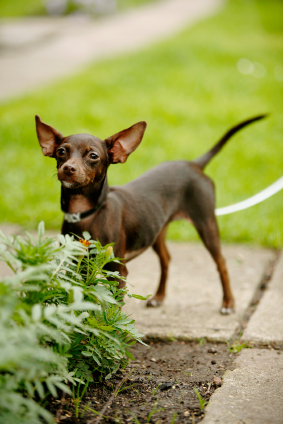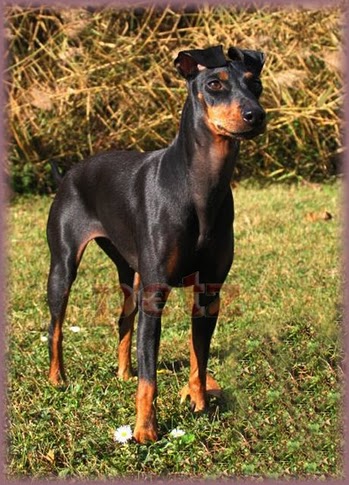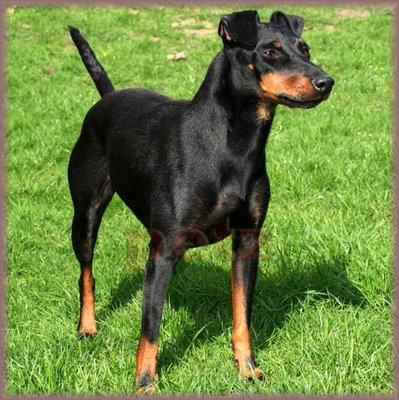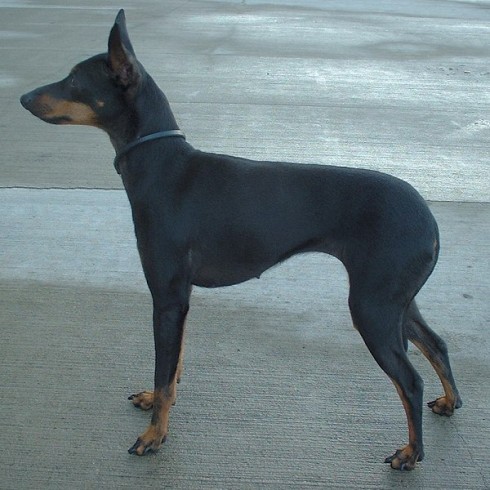Main Index
In Store
Our Web Store
Miniature Schnauzer Picture Gallery
Latest Dog Blogs
- What Are The Basic Commands To Train A Dog?
- PaySafe As The Most Popular Type Of Deposit
- Everything You Need To Know About Pet Sales
- Dogs Contribute To Our Physical And Mental Well Being
- How To Choose Where To Bet On Greyhounds In 2022
- Volunteer With Animals - How To Help Dogs Around The World
- Basic Understanding Of The House Edge
- Why You Should Get A Dog
- Top 20 Popular Dog Names Around The World
- Constipation in Dogs and How to Find Solutions
English Toy Terrier
English Toy Terrier Picture Gallery
English Toy Terrier Clubs/Associations
The Full English Toy Terrier Description
The big dog in a toy body.
Although the English Toy Terrier is a very small dog he has a big personality. He will think nothing of taking on a much larger dog if threatened and will fight to the end to protect his owner. Very independent and a very healthy dog he generally requires a vet visit once a year. He has a pleasant disposition and will give his owner boundless love and pleasure. Although small the English Toy Terrier can walk for miles but do not ask him to go out in a rainy day; even puddles are avoided at all cost. Throw a ball into the sea for your other breed to retrieve the ETT will prance on the shoreline until the ball is on dry land and then run off with it whilst your other breed is shaking itself dry. Therefore, he is quite a comedian in human terms.
Once smitten by this breed you will always be a devotee of the English Toy Terrier.
Indicative Breed Standard
General Appearance
Well balanced, elegant and compact, sleek and cleanly built.
Characteristics
Toy with Terrier characteristics.
Temperament
Alert, remembering that historically he could acquit himself satisfactorily in the rat pit. Never unduly nervous.
Head and Skull
Head long, narrow, flat skull, wedge-shaped without emphasis of cheek muscles, well filled up under eyes. Top and bottom jaws held tightly together within compressed lips. Slight stop. Foreface tapers gently to provide wedge-shaped impression, in profile similar to that seen when viewed from front. Although an illusion of being overshot can result, any suggestion of snipey appearance is undesirable. Nose black.
Eyes
Dark to black, without light shading from iris. Small, almond-shaped, obliquely set and sparkling.
Ears
Candle-flame shape, slightly pointed tips, placed high upon back of skull and proportionately close together. A guide to size can be obtained by bending ear forward – it should not reach eye. From nine months of age ear carriage must be erect. Entire inside of ear should face front. Leather of ear thin.
Mouth
Jaws strong, with a perfect, regular and complete scissor bite, i.e. upper teeth closely overlapping lower teeth and set square to the jaws. Teeth level and strong.
Neck
Long, graceful, slightly arched. Shoulders well laid back. Line of neck flowing into shoulders, and sloping off elegantly. Throatiness undesirable.
Forequarters
Legs falling straight from shoulders with elbows close to chest providing a straight front. Fine bone eminently desirable.
Body
Body compact, head and legs proportionate thus producing correct balance. Back very slightly curving from behind shoulder to loin, falling again to root of tail. Chest narrow and deep with ribs well sprung. Loins well cut up. Buttocks gently rounded.
Hindquarters
Well rounded loin leading to a good turn of stifle; hocks well let down; turning neither in nor out; a ‘tucked under’ appearance undesirable.
Feet
Dainty, compact; split up between toes; well arched, with jet black nails, two middle toes of front feet rather longer than others, hind feet cat-like. Hare feet undesirable.
Tail
Thick at root, tapering to point. Set low and not reaching below hock. ‘Gay’ tail undesirable if displayed to excess.
Gait/Movement
Ideal fore-movement akin to the ‘extended trot’; hackney action not desirable; equally a ‘shuffling gait’ undesirable. Hind action smooth with ease and precision combined with drive, there should be flowing quality to indicate true soundness.
Coat
Thick, close and glossy. A density of short hair required.
Colour
Black and Tan. The black ebony, the tan likened to a new chestnut deeply rich. Colours not running or blending into each other, but meeting abruptly, forming clear and well defined lines of colour division. Forelegs tanned to knees in front. The tan then continuing inside and at back of forelegs to point just below elbows, the thin black line up each toe (pencilling) and a clearly defined black mark (thumb mark) on centre of each pastern, and under chin. Hindlegs well tanned in front and inside with black bar dividing tan at centre of lower thigh. Heavy tan on outside of hindquarters (breeching) undesirable. Muzzle well tanned. Nose black, the black continuing along top of muzzle, curving below eyes to base of throat. A tan spot above each eye and a small tan spot on each cheek. Under-jaw and throat tanned, lip line black. Hair inside ears tan (tan behind ears undesirable). Each side of chest has some tan. Vent and under root of tail, tan. White hairs forming a patch anywhere totally undesirable.
Size
Ideal weight 2.7-3.6 kgs (6-8 lbs). Ideal height 25-30 cms (10-12 ins) at the shoulder.
About Our Article Directory
- Article
- 27 November 2010
- 2 comments
Canis lupus familiaris
- Breed Article
- 29 May 2010
- No comments
Quick Search
Donate
Latest Dog Pods
- Tips on How to Stop Your Dog from Biting
- Beware - Not All Advertised Dog Rescues Really Are! How Can You Know The Truth?
- Helpful Tips For Dog Obedience Problems
- How to Keep Dogs From Eating Poop
- Dog Grooming Tips - A General Overview of the Very Basics of Dog Grooming
- Recognising Different Types of Dog Obedience Problems
- 5 Important Tips On Feeding A Puppy


